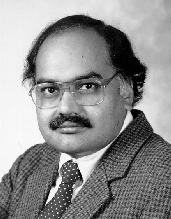
The origin of Paryushana is related to the staying of the monks in one place for the rainy season. "Paryushana" is staying of the monks in one place. In popular terminology this stay is termed "chaturmaasa" because the rainy season is regarded to be about four months. However the minimum duration of Paryushana is regarded to be 70 days. For this minimum duration, Paryushana must be initiated by panchami (fifth day) of the shukla phase of the Bhadrapada month. In the scriptures it is described that Lord Mahavira used to start Paryushana on Bhadrapada Shukla panchami.
The date for the Paryushana festival is thus Bhadrapada Shukla panchami for both major sects. Because of computational and other differences there can be some minor differences among various subsects. Recently there have been attempts to get everyone to agree to use the same date.
Because at this time the monks have settled in the town for a longer duration, it is time for the householders to have an annual renewal of the faith by listening to the statement of the Dharma and by meditation and vratas (self-control). In the Digambaras, it is done by starting a 10-day period from Paryushana (Bhadrapada Shukla panchami) during which the dashalakshana vrata is undertaken. In the Swetambaras an 8-day festival is celebrated that ends with Bhadrapada Shukla panchami. The last day is called Samvatsari, short for Samvatsari Pratikramana, as described below.
During the 8-day festival, the Kalpa Sutra is recited in the Swetmbara sect, that includes a recitation of the section on birth of Lord Mahavira on the fifth day. In the Digambara sect the Tatvartha-sutra of Umaswati is recited. On the dashami, the sugandha-dashami vrata occurs. The Digambaras celebrate Ananta- chaturdashi on the chaturdashi, special worship is done on this day. Many towns have a procession leading to the amin temple.
The original Prakrit(ardha-magadhi) term for Paryushana is "Pajjo-savana". Remember that in case of Jain terms, the prakrit forms of the words are the original.
Pratikramana (Samayika) - Renewal meditation:
Pratikramana means turning back. It is a form of meditation where one reflects on his spiritual journey and renews his faith. For both Swetambaras and Digambaras, it takes the form of periodic meditation. The period can be twice daily (morning and evening), once every lunar phase, every four months, or every year. The annual Pratikramana in some form is the minumum for a Sravaka.
The annual Pratikramana is Samvatsari Pratikramana, in short Samvatsari. Since it coincides with Paryushana, the terms "Samvatsari" and "Paryushana" are sometimes used interchangably.
Pratikramana includes Samayika: to stay in equanimity by withdrawing to the self. Prayers to the Five Supremes, 24 Jinas and the 4 mangalas, including the Dharma as presented by the ancient Masters. Prayer to the Master (Guru) or the Deity. Reflections on vratas and past transgressions. Kayotsarga - detachment from the body by controlling it. Pratyakhyan - making resolutions for the next period (next year for Samvatsari Pratikramana).
The detailed recommended procedure can be found in the handbooks. Detailed Pratikramana takes about 3 hours, however all essentials can be done in a much shorter time if needed. Pratikramana is also sometimes termed Samayika in the Digambara tradition.
Dasha-Lakshana Vrata:
This is a vrata that celebrates 10 components of the dharma: Noble kshama (forbearance), mardava (gentleness), arjava (uprightness), shaucha (purity), satya (truth), sanyam (restraint), tapa (austerity), tyaga (renunciation), akinchanya (lack of possession) and brahmcharya (chastity), as described by Umaswati.
In the full form, it is a 10 day vrata that spans 10 years. It may be undertaken during Shukla Panchami to Chaturdashi of Bhadrapada, Magh or Chaitra. However it it common to do it during Bhadrapada, in which case it starts with Paryushana.
Requesting Forgiveness:
At the conclusion of the festival, the Sravakas request each other for forgiveness for all offenses committed during the last year. This occurs on the Paryusha day for the Swetambara and on Pratipada (first) of Ashwin Krashna for the Digambara.
 Prof. Dr. Yashwant K. Malaiya
Prof. Dr. Yashwant K. Malaiya